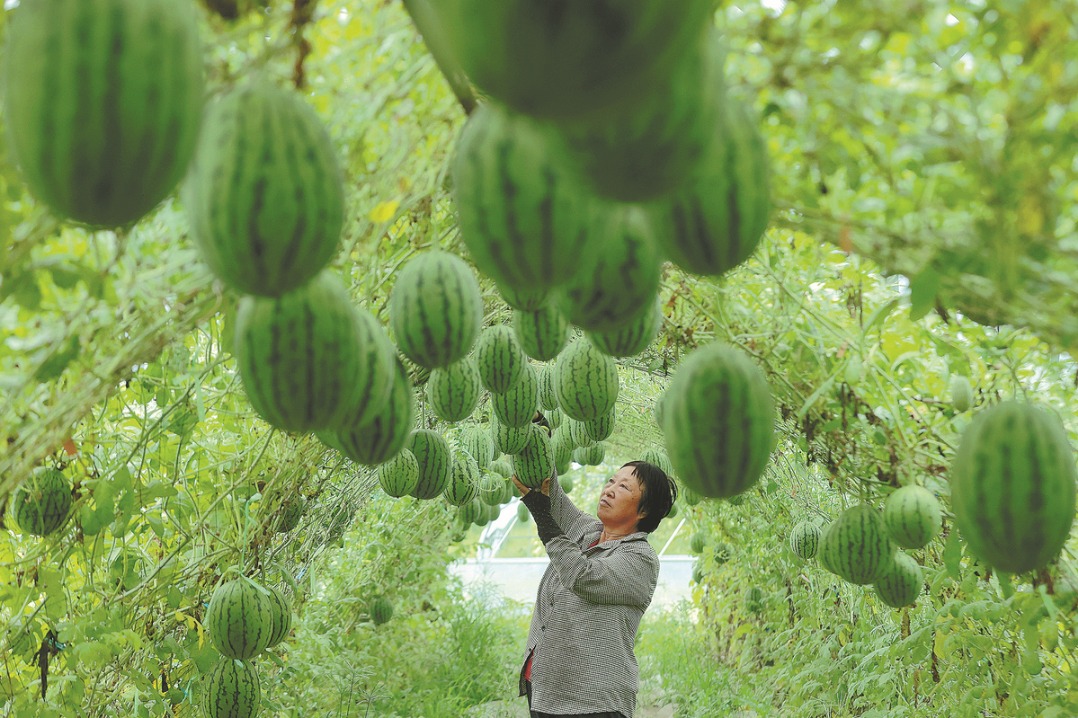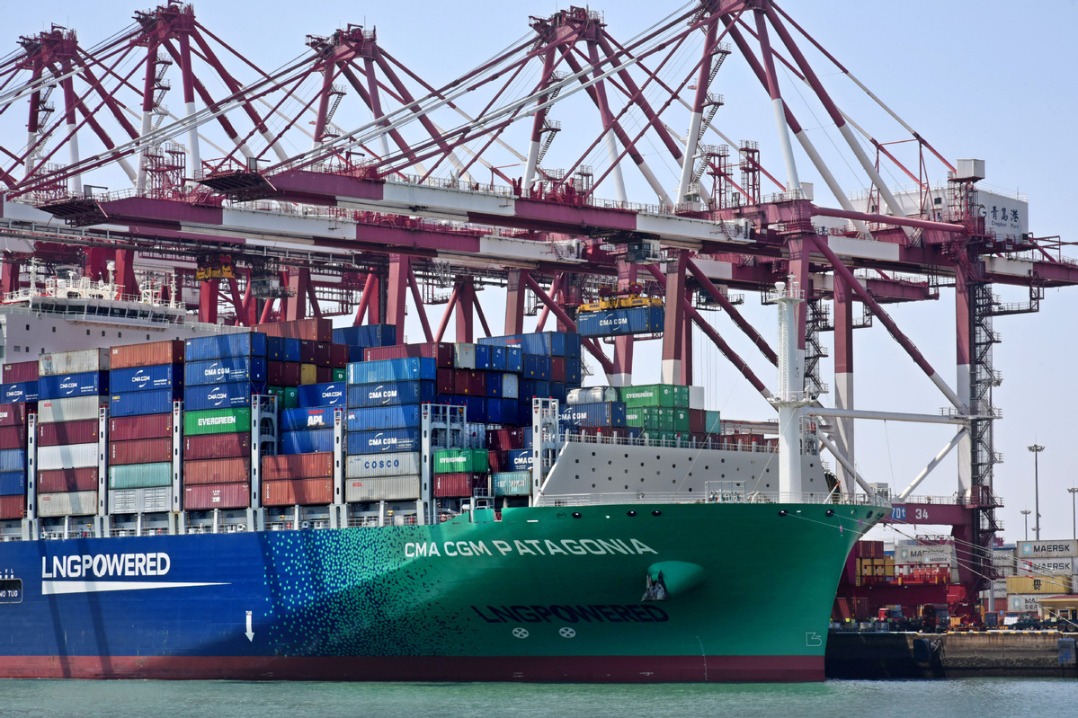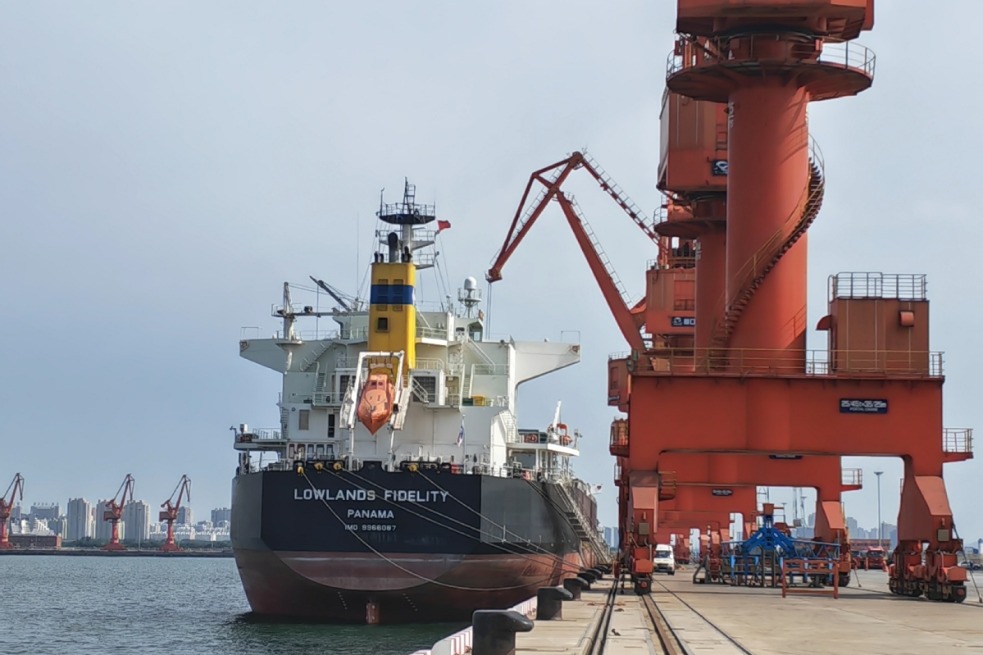Room to grow


SHI YU/CHINA DAILY
'Overcapacity' should be viewed from a global, dynamic perspective
The Joe Biden administration recently announced new tariffs on a variety of imports from China, particularly on electric vehicles and lithium batteries. Prior to that, US Treasury Secretary Janet Yellen mentioned the issue of so-called overcapacity in China during her recent trip to the country. The issue of alleged overcapacity in China's green industry has once again become a widely discussed topic.
Industrial overcapacity is not a new topic. Many scholars have discussed its causes. They generally believe that it's a result of reckless investment by businesses amid incomplete market information, undue government interventions in microeconomic activities, a sudden fall-off in market demand caused by domestic or overseas factors, and economic cycles. But these views are based on a static analysis, which only factors in the causes of industrial overcapacity at a given point in time, instead of analyzing industrial overcapacity from a dynamic perspective that includes changes to the industrial structure.
Economic growth requires continuous upgrading of the industrial structure. Each industry has its own life cycle. Its share of the overall national economy will rise at the beginning, and then it begins to decline after reaching its peak. During the decline period, the share of emerging industries will rise. The industrial structure is upgraded amid the trade-off between one industry and another, driving sustained economic growth.
Our research team has recently collected carbon intensity data (carbon emissions per unit of export volume) and China's export data from 2002 to 2021 to examine the relationship between the carbon intensity of Chinese products and China's export structure.
We have reached three conclusions. First, the share of China's product exports in China's total exports and destination markets shows an inverted U-shaped curve of first increasing and then decreasing. Second, the products with higher carbon intensity reach their export peaks earlier than those with lower carbon intensity. Third, this non-linear relationship is mainly caused by changes in the comparative advantages of industries due to an increase in the cost of carbon emissions in China.
Thus, changes to the industrial structure based on carbon intensity are in line with the general law of industrial change. Industries with different levels of carbon intensity have their own life cycles. Products with higher carbon intensity will be gradually phased out, while greener products with lower carbon intensity will gradually account for a larger and larger share of the national economy. As a result, the overall carbon intensity and carbon emissions of the national economy will decline.
The above findings provide a new way of thinking: to determine whether an industry has excess capacity, we should not only examine the current state of supply-demand balance, but also consider which stage of the life cycle the industry is currently in.
If the industry has entered a downward trajectory, the industry's oversupply relative to market demand will continue to exist as the market demand will continuously shrink in the future. Against this backdrop, if backward businesses cannot be eliminated from the market due to market distortions and improper interventions by the government, excess capacity will come into being.
If an industry is on an upward trajectory, the future demand will continue to expand and the new market demand will absorb more production capacity. Under this circumstance, even if the supply exceeds demand in the short run, the industry shouldn't be deemed as having excess capacity from a dynamic perspective that includes the whole life cycle of the industry, as long as the industry can continuously improve its production technology and enhance production efficiency.
Specifically, due to the low-carbon nature of green industries, most of them have not yet reached the peak in their life cycle and are on an upward trajectory, so the judgment of whether there is excess capacity in these industries should factor in future demand.
In terms of domestic demand, achieving the carbon neutrality goal calls for greater efforts to promote new energy in the years to come, which provides a broad market and huge growth space for China's new-energy industry.
From a global perspective, the supply of and demand for green industries are both globalized. The development of green, low-carbon and environment-friendly new energy is an important part of the global efforts to tackle climate change. The global demand for new energy products has been growing, creating huge growth potential for the new-energy industry.
According to the estimates of the International Energy Agency, electric car sales reached 14.65 million units in 2023, about 42 times the sales figure in 2014. To accomplish the goal of carbon neutrality, the global EV sales will need to reach 45 million units by 2030, which is more than three times that of 2023.It is expected that by 2030, the global demand for power batteries will reach 3,500 GWh, four times the global shipments in 2023. These demands far exceed the current global supply capacity.
Finally, from the global development trend, the photovoltaic industry will maintain high-speed growth. The IEA has been upgrading its forecasts on installed capacity for 2030. It is expected that annual solar PV additions will expand more than fourfold to 650 GW by 2030. Therefore, in the face of the carbon peaking and carbon neutrality goals and the hefty global demand, the "new three" (solar cells, lithium-ion batteries and electric vehicles) production are far from experiencing overcapacity, but rather in serious under capacity.
In a nutshell, the issue of overcapacity should be viewed from a dynamic and global perspective. China's green industries are still on an upward trajectory, with great market potential. Supply exceeding demand is a short-term phenomenon. Policy governance should focus on improving efficiency rather than only limiting capacity.
Ju Jiandong is director of the Center for International Finance and Economic Research at PBC School of Finance at Tsinghua University. Feng Lu is an assistant researcher with the Center for International Finance and Economic Research at PBC School of Finance at Tsinghua University. The authors contributed this article to China Watch, a think tank powered by China Daily. The views do not necessarily reflect those of China Daily.
Contact the editor at editor@chinawatch.cn.

































